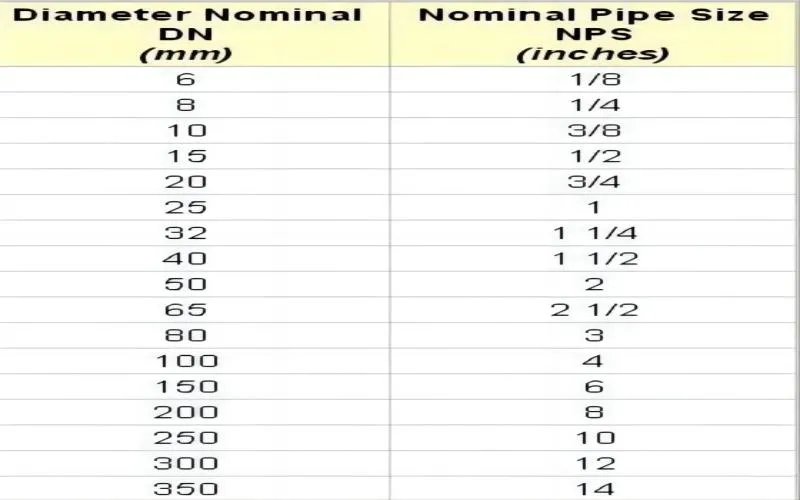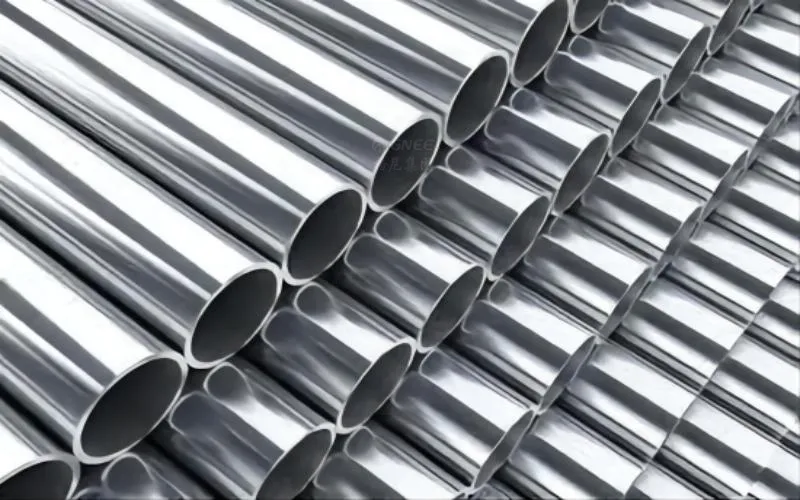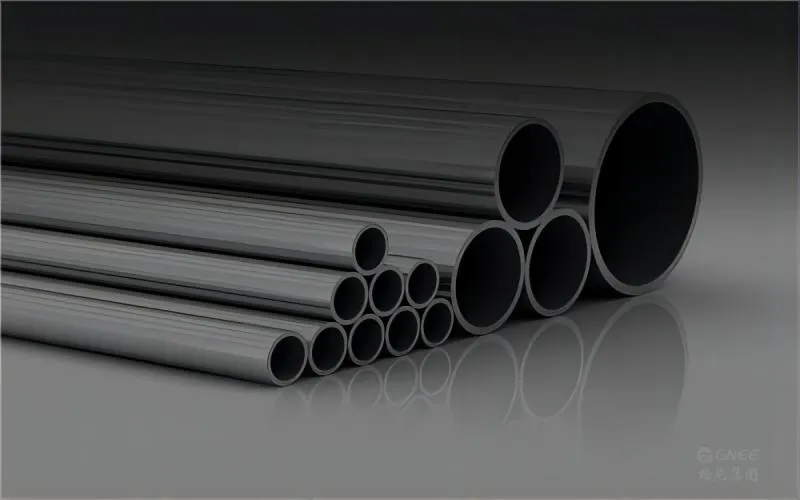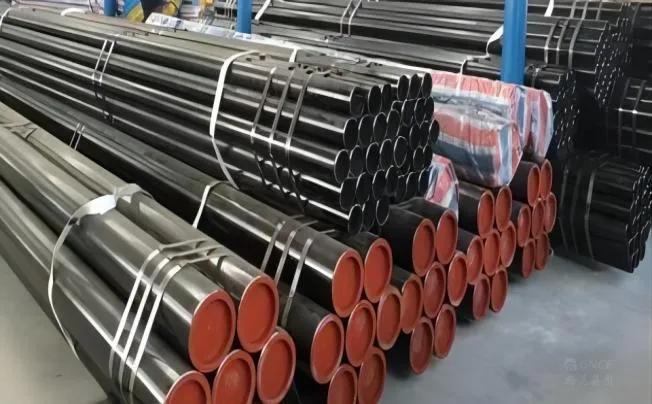Nominal Stainless Steel Pipe Size
A standardized system called Nominal Pipe Size (NPS) is used to identify the size of pipes. It is a series of standard pipe sizes used in the plumbing, building, and engineering industries in North America. The NPS system gives pipe diameters a standard terminology, which improves interoperability and communication amongst various parts of a piping system.
The NPS designation and the pipe’s actual dimensions are not the same. Rather, it denotes a nominal or approximate dimension. Although the outward diameter (OD) and wall thickness are also taken into account, the NPS size is determined by the pipe’s internal diameter (ID). NPS sizes, which range from 1/8 inch to 36 inches or more, are commonly expressed as whole numbers. For instance, NPS 1/2 designates a pipe that is nominally 1/2 inch in size, and NPS 10 designates a pipe that is nominally 10 inches in size.
It’s crucial to remember that a pipe’s actual dimensions can change based on some variables, including the material, industry regulations, and production standards. For precise dimensions and sizing information, it is therefore advised to refer to the pertinent standards or specifications.

What is DN Size?
A part or object’s DN dimensions are expressed in DN (nominal diameter) units. The dimensions of pipes, fittings, and other parts are specified using the DN standard system in a variety of industries, including manufacturing, plumbing, and engineering. The approximate interior diameter of the component is represented by the DN dimension, which is crucial for ensuring compatibility and appropriate system operation.
The diameter of the pipe that a fitting is intended to join, for instance, is specified by the DN size when it comes to pipe fittings. A DN10 flange, for instance, is made to suit pipes with an internal diameter of roughly 10 mm. Similarly, a DN16 reducer is meant to join a DN16-flanged pipe to a DN10-flanged pipe.
It is crucial to remember that DN dimensions and the component’s real physical dimensions are not always the same. The DN system offers a uniform way to express dimensions, although the actual dimensions may change depending on the locations or sectors.

What Connection Exists Between a Stainless Steel Pipe’s Outer Diameter and its Nominal Diameter (DN)?
Pipe Outer Diameter
Stainless steel pipe diameters are often broken down into nominal, inner, and outer diameters. The letter D stands for the seamless steel pipe’s outside diameter, which is followed by the dimensions and wall thickness. For instance, D108*6 and an outer diameter like De63 represent a seamless steel pipe with an outside diameter of 108 and a wall thickness of 6MM. DN also represents other steel pipe types, including cast iron, galvanized, and reinforced concrete pipes. Nominal diameters are typically utilized in design and manufacturing, and they are used to represent them in design drawings.
Most pipe fittings, including stainless steel pipes, are specified by their nominal diameter, an artificial standard created for ease of maintenance. The nominal diameter, or DN as it is also known, is the nominal diameter. It is the standard diameter of different types of pipe accessories and fittings. It is possible to connect and swap out pipes and pipe accessories with the same nominal diameter. Although its value is close to or equal to the inner diameter of the pipe, it is not the outer or inner diameter of the pipe in the true sense; instead, the nominal diameter, also known as nominal diameter, nominal diameter, is used to standardize the connection sizes of pipes and fittings. For instance, welded steel pipes can be separated based on thickness into three categories: thickened steel pipes, regular steel pipes, and thin-walled steel pipes. Its nominal diameter is comparable to the inner diameter of regular steel pipes rather than being the outer or inner diameter. Every nominal diameter has an outer diameter that matches it, while the inner diameter’s value changes with thickness. In both metric and imperial systems, the nominal diameter can be given in millimeters. Another way to express pipe fittings is in nominal diameter, which is the same as the seamed pipe.

Stainless Steel Pipe DN size
The inner and outer diameters of pipe fittings, like stainless steel pipes, differ from their nominal diameter. For instance, the 1025 and 1085 kinds of seamless steel pipes have a nominal diameter of 100 mm. The stainless steel pipe’s diameter and wall thickness are represented by the numbers 5 and 108, respectively. As a result, the steel pipe’s inner diameter is (108*5-5) = 98 mm. However, this figure does not quite match the difference between the steel pipe’s outer diameter and the wall thickness. Put differently, the nominal diameter needs to be utilized in the design drawings because it is only roughly equivalent to the inner diameter and not the specification name of the diameter of the stainless steel pipe, which is exactly equivalent to the inner diameter. Based on the nominal diameter, the goal is to ascertain the structural measurements and methods of connection for pipes, fittings, valves, flanges, gaskets, etc. The sign DN stands for both nominal diameters and dimensions. A pipe specification comparison table that shows the nominal diameter and wall thickness of a particular pipe is also necessary if the outer diameter is to be used as the representation for the design sketch.



